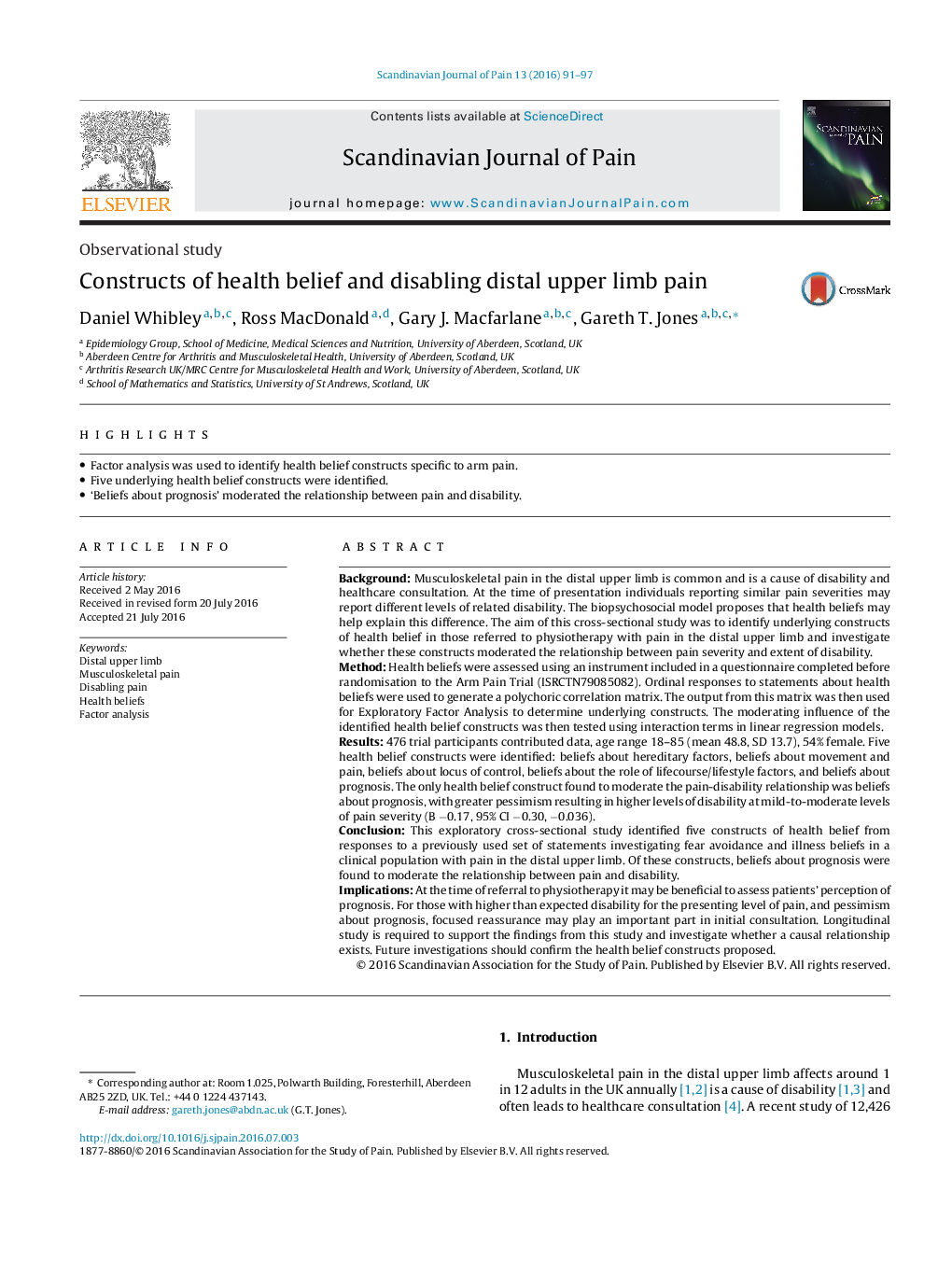| Article ID | Journal | Published Year | Pages | File Type |
|---|---|---|---|---|
| 2770665 | Scandinavian Journal of Pain | 2016 | 7 Pages |
•Factor analysis was used to identify health belief constructs specific to arm pain.•Five underlying health belief constructs were identified.•‘Beliefs about prognosis’ moderated the relationship between pain and disability.
BackgroundMusculoskeletal pain in the distal upper limb is common and is a cause of disability and healthcare consultation. At the time of presentation individuals reporting similar pain severities may report different levels of related disability. The biopsychosocial model proposes that health beliefs may help explain this difference. The aim of this cross-sectional study was to identify underlying constructs of health belief in those referred to physiotherapy with pain in the distal upper limb and investigate whether these constructs moderated the relationship between pain severity and extent of disability.MethodHealth beliefs were assessed using an instrument included in a questionnaire completed before randomisation to the Arm Pain Trial (ISRCTN79085082). Ordinal responses to statements about health beliefs were used to generate a polychoric correlation matrix. The output from this matrix was then used for Exploratory Factor Analysis to determine underlying constructs. The moderating influence of the identified health belief constructs was then tested using interaction terms in linear regression models.Results476 trial participants contributed data, age range 18–85 (mean 48.8, SD 13.7), 54% female. Five health belief constructs were identified: beliefs about hereditary factors, beliefs about movement and pain, beliefs about locus of control, beliefs about the role of lifecourse/lifestyle factors, and beliefs about prognosis. The only health belief construct found to moderate the pain-disability relationship was beliefs about prognosis, with greater pessimism resulting in higher levels of disability at mild-to-moderate levels of pain severity (B −0.17, 95% CI −0.30, −0.036).ConclusionThis exploratory cross-sectional study identified five constructs of health belief from responses to a previously used set of statements investigating fear avoidance and illness beliefs in a clinical population with pain in the distal upper limb. Of these constructs, beliefs about prognosis were found to moderate the relationship between pain and disability.ImplicationsAt the time of referral to physiotherapy it may be beneficial to assess patients’ perception of prognosis. For those with higher than expected disability for the presenting level of pain, and pessimism about prognosis, focused reassurance may play an important part in initial consultation. Longitudinal study is required to support the findings from this study and investigate whether a causal relationship exists. Future investigations should confirm the health belief constructs proposed.
